Classification Organic compound | ||
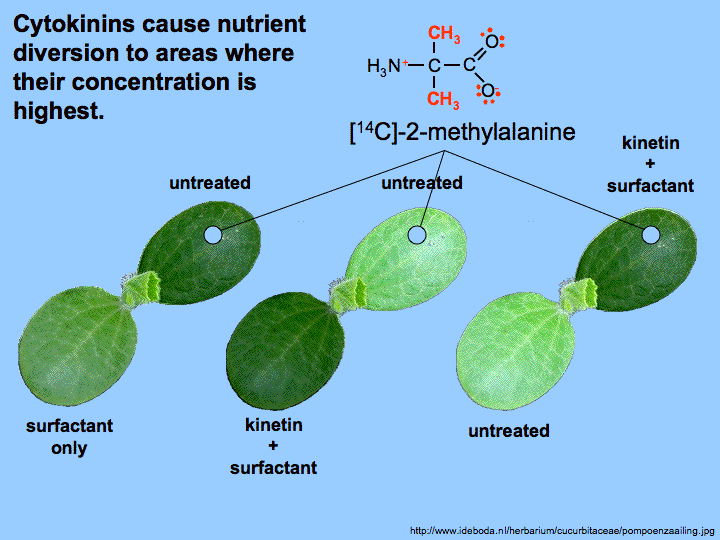 | ||
Cytokinin
Cytokinins (CK) are a class of plant growth substances (phytohormones) that promote cell division, or cytokinesis, in plant roots and shoots. They are involved primarily in cell growth and differentiation, but also affect apical dominance, axillary bud growth, and leaf senescence. Folke Skoog discovered their effects using coconut milk in the 1940s at the University of Wisconsin–Madison.
Contents
- Cytokinin
- Cytokinins history of discovery biosynthesis and mechanism of action
- Mode of action
- Biosynthesis
- Uses
- References
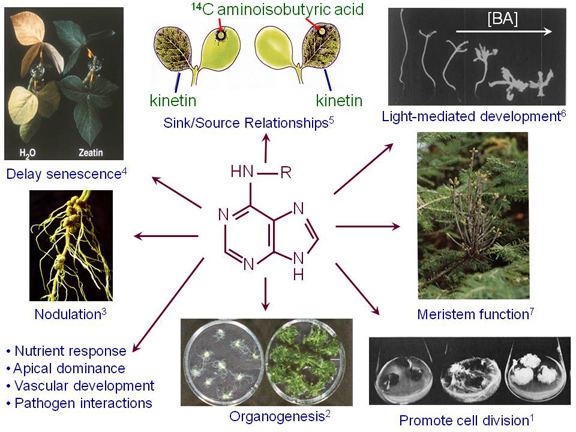
There are two types of cytokinins: adenine-type cytokinins represented by kinetin, zeatin, and 6-benzylaminopurine, and phenylurea-type cytokinins like diphenylurea and thidiazuron (TDZ). Most adenine-type cytokinins are synthesized in roots. Cambium and other actively dividing tissues also synthesize cytokinins. No phenylurea cytokinins have been found in plants. Cytokinins participate in local and long-distance signalling, with the same transport mechanism as purines and nucleosides. Typically, cytokinins are transported in the xylem.

Cytokinins act in concert with auxin, another plant growth hormone. The two are complementary, having generally opposite effects.
Cytokinins history of discovery biosynthesis and mechanism of action
Mode of action

The ratio of auxin to cytokinin plays an important role in the effect of cytokinin on plant growth. Cytokinin alone has no effect on parenchyma cells. When cultured with auxin but no cytokinin, they grow large but do not divide. When cytokinin is added, the cells expand and differentiate. When cytokinin and auxin are present in equal levels, the parenchyma cells form an undifferentiated callus. More cytokinin induces growth of shoot buds, while more auxin induces root formation.
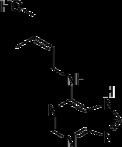
Cytokinins are involved in many plant processes, including cell division and shoot and root morphogenesis. They are known to regulate axillary bud growth and apical dominance. The "direct inhibition hypothesis" posits that these effects result from the cytokinin to auxin ratio. This theory states that auxin from apical buds travels down shoots to inhibit axiliary bud growth. This promotes shoot growth, and restricts lateral branching. Cytokinin moves from the roots into the shoots, eventually signaling lateral bud growth. Simple experiments support this theory. When the apical bud is removed, the axillary buds are uninhibited, lateral growth increases, and plants become bushier. Applying auxin to the cut stem again inhibits lateral dominance.

While cytokinin action in vascular plants is described as pleiotropic, this class of plant hormones specifically induces the transition from apical growth to growth via a three-faced apical cell in moss protonema. This bud induction can be pinpointed to differentiation of a specific single cell, and thus is a very specific effect of cytokinin.
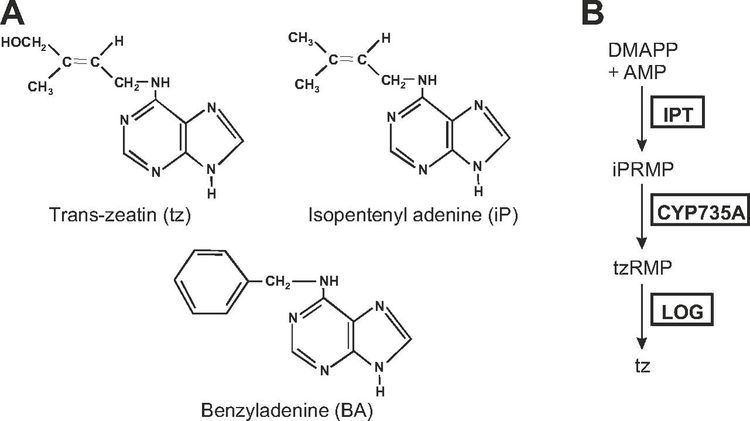
Cytokinins have been shown to slow aging of plant organs by preventing protein breakdown, activating protein synthesis, and assembling nutrients from nearby tissues. A study that regulated leaf senescence in tobacco leaves found that wild-type leaves yellowed while transgenic leaves remained mostly green. It was hypothesized that cytokinin may affect enzymes that regulate protein synthesis and degradation.
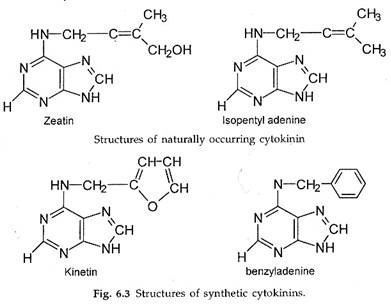
Cytokinin signaling in plants is mediated by a two-component phosphorelay. This pathway is initiated by cytokinin binding to a histidine kinase receptor in the endoplasmic reticulum membrane. This results in the autophosphorylation of the receptor, with the phosphate then being transferred to a phosphotransfer protein. The phosphotransfer proteins can then phosphorylate the type-B response regulators (RR) which are a family of transcriptions factors. The phosphorylated, and thus activated, type-B RRs regulate the transcription of numerous genes, including the type-A RRs. The type-A RRs negatively regulate the pathway.
Biosynthesis

Adenosine phosphate-isopentenyltransferase (IPT) catalyses the first reaction in the biosynthesis of isoprene cytokinins. It may use ATP, ADP, or AMP as substrates and may use dimethylallyl pyrophosphate (DMAPP) or hydroxymethylbutenyl pyrophosphate (HMBPP) as prenyl donors. This reaction is the rate-limiting step in cytokinin biosynthesis. DMADP and HMBDP used in cytokinin biosynthesis are produced by the methylerythritol phosphate pathway (MEP).
Cytokinins can also be produced by recycled tRNAs in plants and bacteria. tRNAs with anticodons that start with a uridine and carrying an already-prenylated adenosine adjacent to the anticodon release on degradation the adenosine as a cytokinin. The prenylation of these adenines is carried out by tRNA-isopentenyltransferase.
Auxin is known to regulate the biosynthesis of cytokinin.
Uses
Because cytokinin promotes plant cell division and growth, produce farmers use it to increase crops. One study found that applying cytokinin to cotton seedlings led to a 5–10% yield increase under drought conditions.
Cytokinins have recently been found to play a role in plant pathogenesis. For example, cytokinins have been described to induce resistance against Pseudomonas syringae in Arabidopsis thaliana and Nicotiana tabacum. Also in context of biological control of plant diseases cytokinins seem to have potential functions. Production of cytokinins by Pseudomonas fluorescens G20-18 has been identified as a key determinant to efficiently control the infection of A. thaliana with P. syringae.
